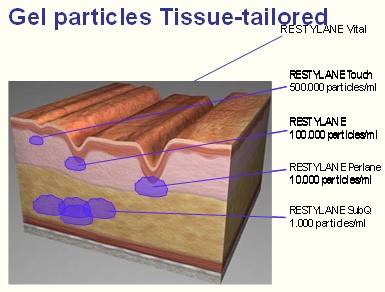Soft Tissue Fillers
Soft tissue fillers are substances that can be injected into the skin to improve the appearance of fine lines and wrinkles, plump lips, fill hollow cheeks, repair various facial imperfections, improve scars, and elevate deep folds. The result is a smoother, more youthful appearance with minimal "downtime" and maximum safety.
Role of fillers
The aging process generally causes a loss of volume as the underlying collagen, hyaluronic acid, and elastin fibers begin to deteriorate and fat stores in the face decrease. This most commonly occurs around the eyes, mouth, cheeks, jaw line, brow, and bridge of the nose, producing crow's feet, laugh lines, folds and furrows on the forehead, and "hills and valleys" on the lower third of the face. Soft tissue fillers have the unique ability to fill and contour these changes.
How do soft tissue fillers work?
A filler substance is injected beneath the surface of the skin where it corrects the line or wrinkle by temporarily plumping and smoothing out the skin depression. Most fillers replace the host components of the skin: collagen, hyaluronic acid, and elastin. Some fillers also can stimulate production of collagen.
What are the differences between fillers?
Dermatologists have developed a variety of filler substances to address a wide range of cosmetic flaws and other needs of the individual patient. Each filler brings subtle, distinctive benefits. Some fillers provide longer-lasting results; others allow for more precision with fine lines, and still others can gradually bring the face into better balance, creating an overall rejuvenated appearance.
Role of Botulinum toxin ("Botox")
It is not a filler. Botulinum toxins, of which there are several brands, are injected into specific facial muscles to immobilize or relax the underlying cause of lines and wrinkles. It is commonly used to improve forehead creases, furrows between the eyebrows, and crow's feet. Using botulinum toxin and fillers in the same area may achieve longer-lasting results.
The treatment
Injections are usually given in a dermatologist's office. The dermatologist may ask about the use of aspirin, warfarin (coumadin), alcohol, green tea, and St. John's wort since these may increase the tendency to bruise. The filler is injected directly into the area to be treated using a very small needle. There may be a stinging or burning sensation as the filler is inserted. After the procedure, there may be some temporary swelling, redness, or minor bruising at the injection sites. This usually subsides quickly. Makeup can be applied immediately after the treatment.
Risks
All medical procedures carry some risk. However, soft tissue fillers are generally considered safe and effective. Apart from an allergic reaction to the injected substance, side effects are few and typically due to the local injection.
Longevity of fillers
This depends on the type of filler used, the areas treated, and the ability of the patient's skin to absorb the materials. Results are generally long-lasting with maintenance treatments performed after 9 months. Occasionally, touch-up treatments may be needed sooner.
Adapted from the American Academy of Dermatology
The information above is a partial and general information and cannot replace the needed specific medical examination and consultation

